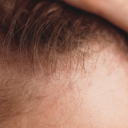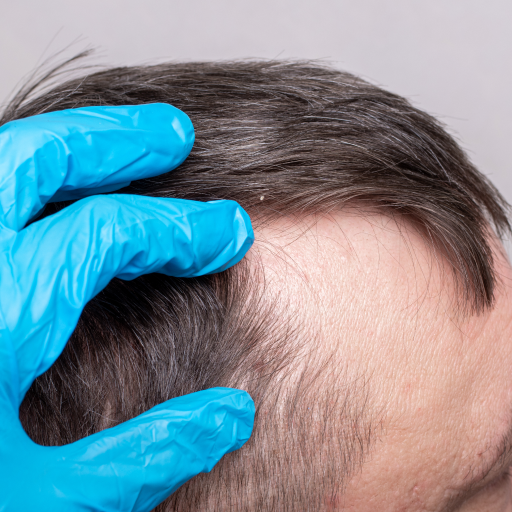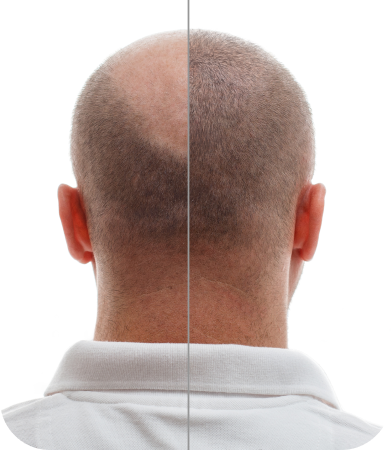How Does Finasteride Work?
Finasteride can reduce a very specific enzyme called 5-alpha-reductase. In male-pattern baldness, this is important because the 5-alpha-reductase creates the byproduct of DHT. Dihydrotestosterone (DHT) is believed to be the main culprit behind male pattern baldness.
For some, hair loss is caused by:
- Hormone imbalances.
- Illness.
- Stress.
However, hair follicles that are sensitive to DHT cause male pattern baldness. Here, DHT causes hair follicles to shrink over time. As they shrink, hair follicles only produce fewer hairs. All the while, we think that one hair follicle equals one hair. The truth is, each hair follicle can produce anywhere from one to five hairs.
As the hair follicles continue to shrink, the hairs they produce may change in thickness and texture. Eventually, they’ll stop producing hairs altogether.
Oftentimes, the top and crown of the head contain DHT-sensitive follicles. That is why we usually see androgenic alopecia beginning with a receding hairline on the forehead.
Typically, men are left with a horseshoe pattern in the later stage of androgenic alopecia. They often exhibit remaining hair only on the sides as well as the back of their head. However, some men also experience bald spots in those areas. Propecia reduces the dominance of DHT by reducing the 5-alpha-reductase enzyme. These drugs eliminate the cause of hair loss. Finasteride is reducing this enzyme consistently. That is why it may take some time before the effects become noticeable. Typically, you will notice the visible results in six months. However, for some, it could take up to one year.
Note that stopping the medication can still result in increased production of the 5-alpha-reductase enzyme again. Having said that, it will lead to additional DHT production, and of course, hair loss problems.
Thus, any re-grown hair as a result of finasteride will also fall out. Moreover, your hair loss problem will resume as well. Needless to say, those people who begin taking Propecia or finasteride should intend to continue taking it for the foreseeable future.
So, if you don’t see any meaningful results with finasteride for one year, it is unlikely that you ever will. If that is the case, then your prescribing doctor will advise you to look into hair transplant surgery.


